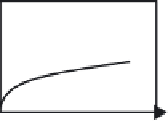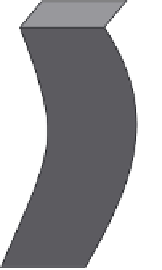Environmental Engineering Reference
In-Depth Information
Fast flux
Core periphery
5.2
Schematics showing fuel outer channel bowing at core periphery
due to large fast neutron fl uence. Largest degree of bowing in
BWR
s
occurs at the core periphery due to the fl ux profi le. Also the type of
FA
bow seems to be very dependent on core location (Strasser
et al
.,
2010a).
5.2.2 Pellet-cladding interaction
Stresses which induce both PCI (usually denotes combined mechanical
and chemical pellet-cladding interaction) and PCMI (usually denotes pel-
let cladding mechanical interaction) are caused by expansion of the fuel
pellet against the cladding during power increases (Adamson
et al
., 2006/7;
Strasser
et al
., 2010a). PCI failures are driven by a stress corrosion crack-
ing (SCC) assisted component resulting from fi ssion product release from
the fuel, while PCMI failures are generally due to purely mechanical crack-
ing, often enhanced by a reduction in cladding ductility due to formation of
local hydrides at the clad outer surface. At the micro level, the PCI crack
always starts at the cladding inner surface and propagates towards the outer
cladding surface while the PCMI crack propagates from the outer to inner
surface.
PCI is associated with local power ramps during reactor start-up or power
manoeuvring (e.g. rod adjustments/swaps, load following) as shown sche-
matically in Fig. 5.3, and is caused by the combination of cladding stress due
to the power increase and the infl uence of iodine, caesium and cadmium
released during the power increase in a susceptible material (Adamson
et al
., 2006/ 2007 ; Strasser
et al
., 2010a). This combination of stress, embrittling



Search WWH ::

Custom Search